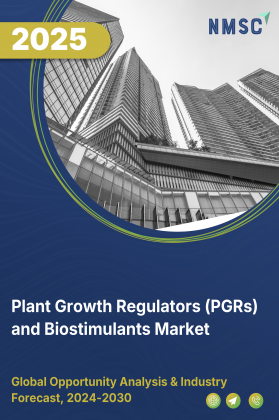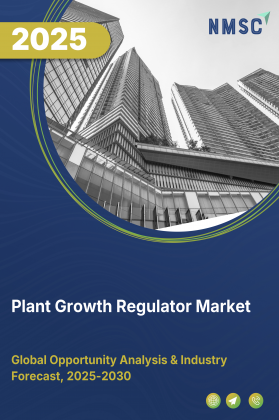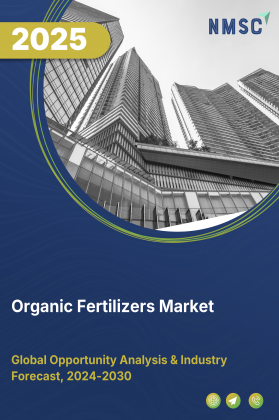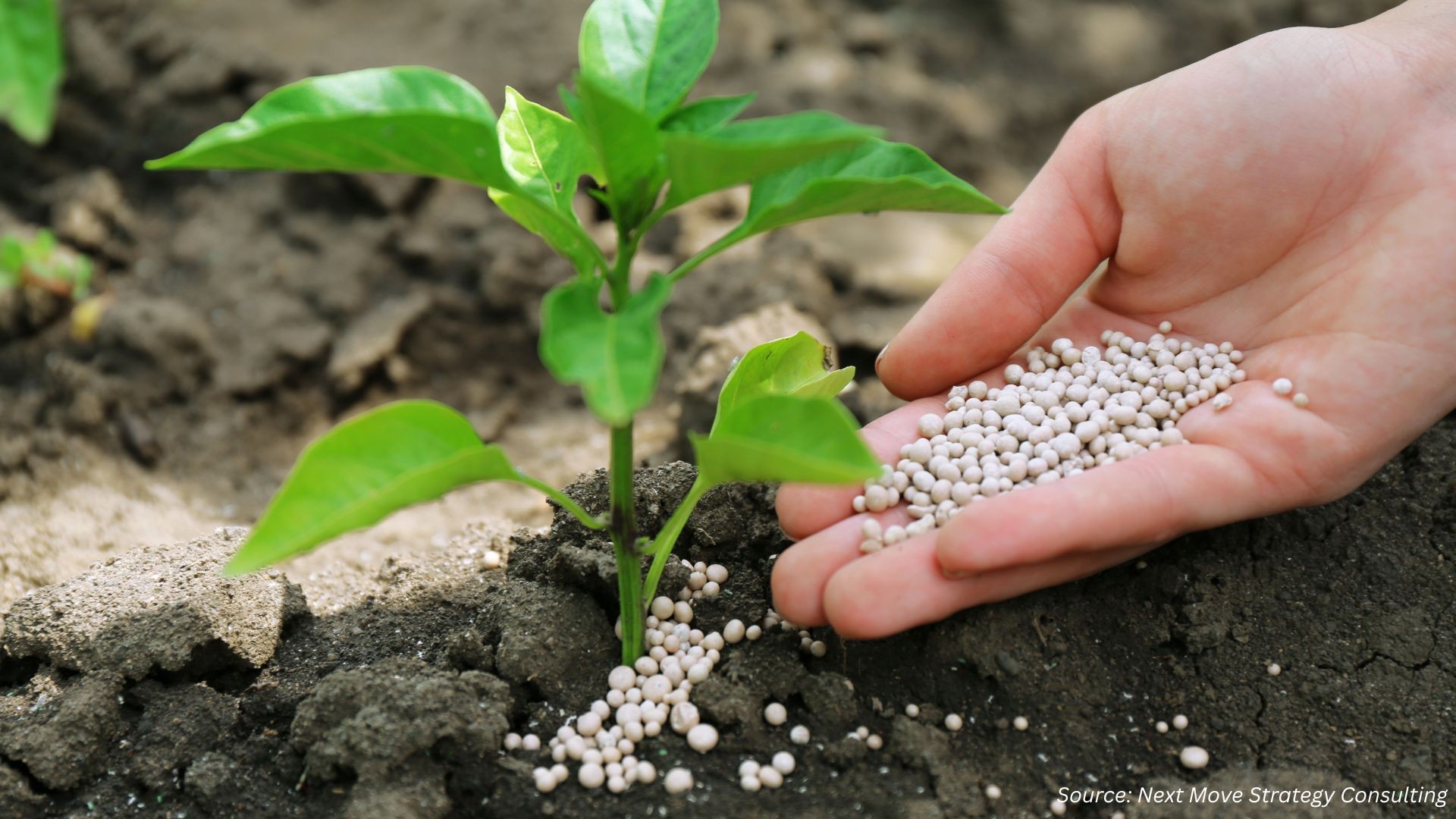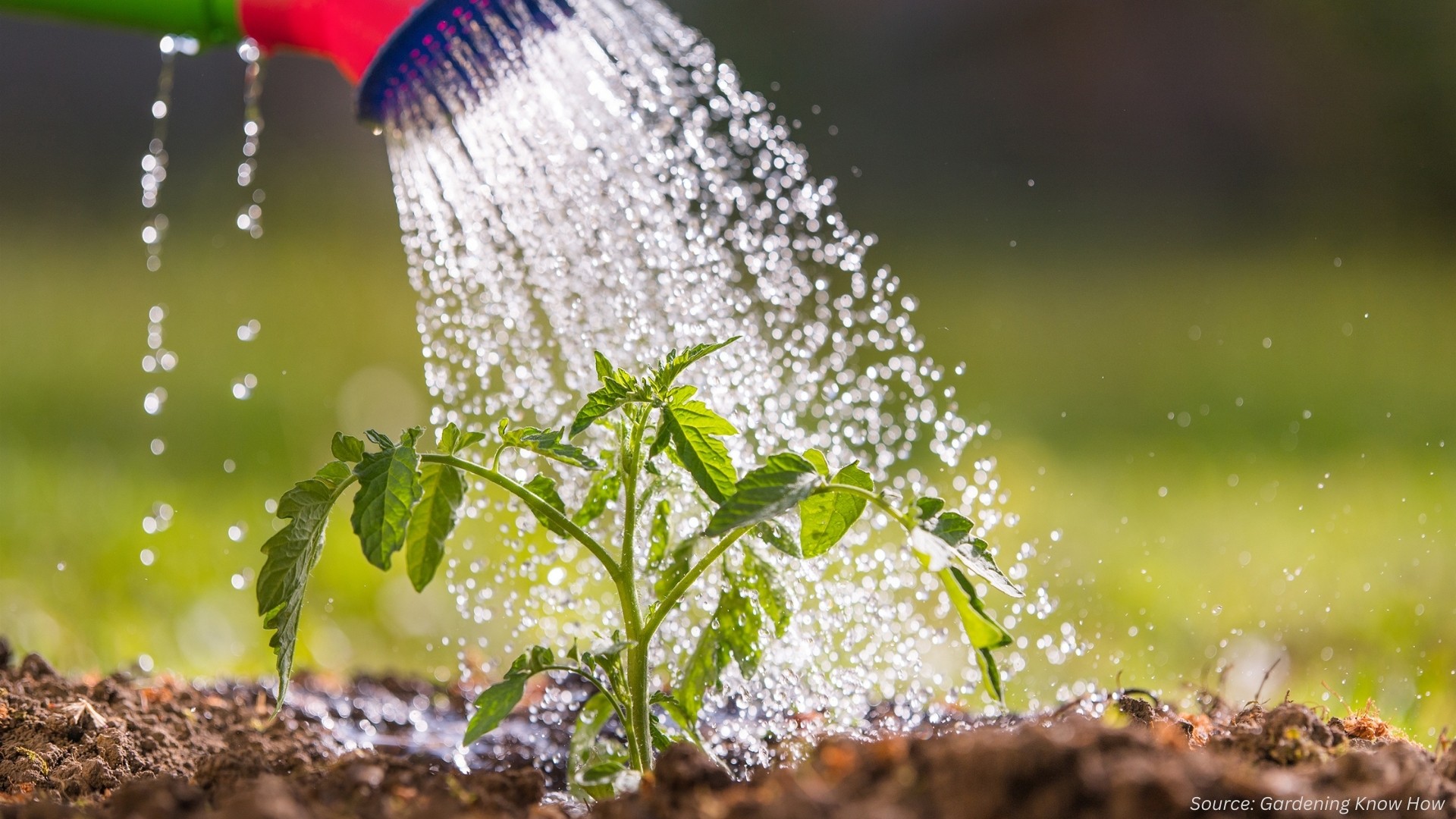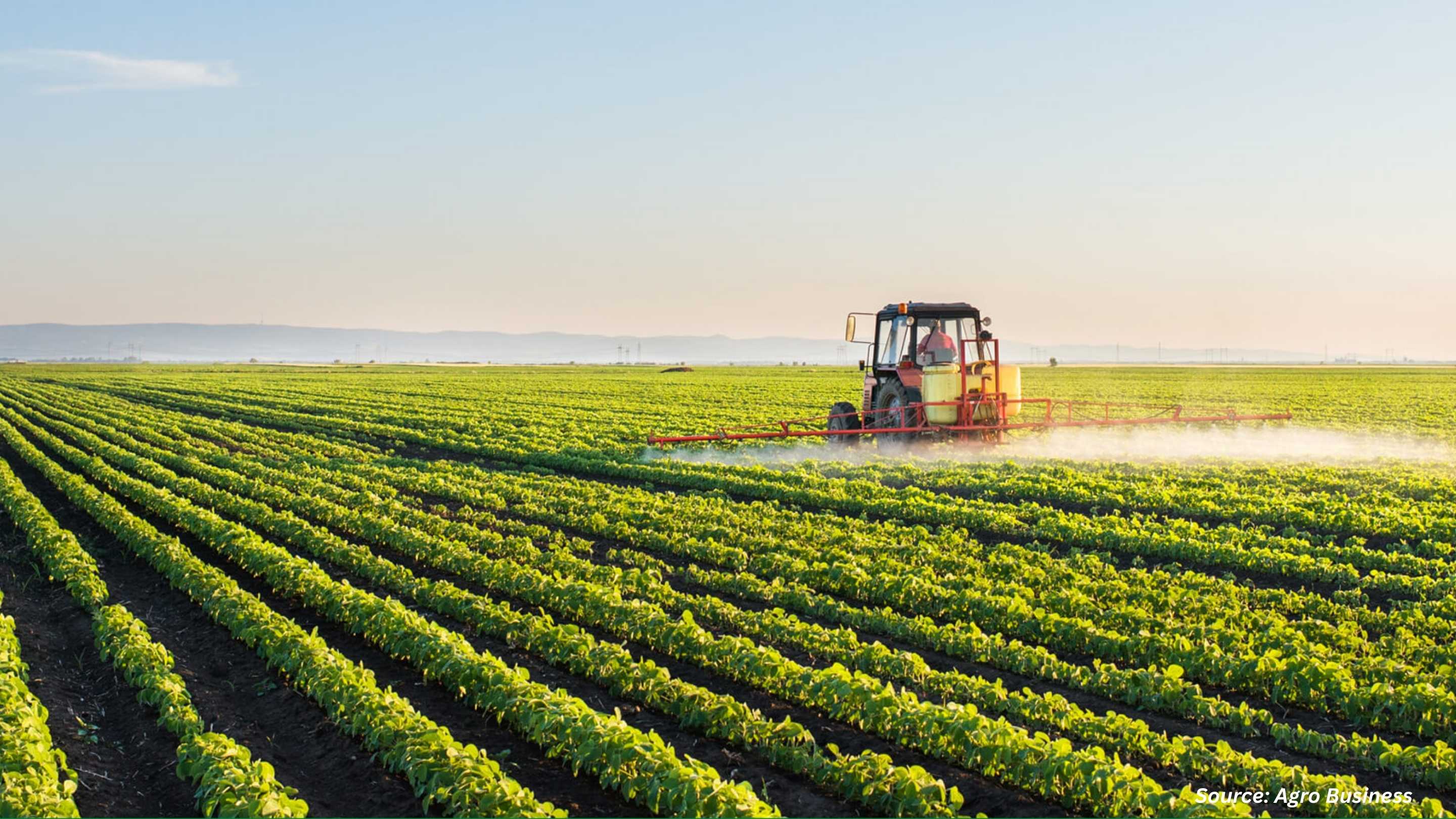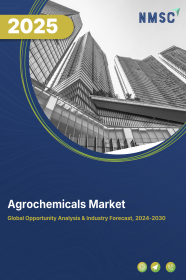
Agrochemicals Market by Product Type (Fertilizers, Pesticides, Adjuvants, and Plant Growth Regulators), by Application (Foliar Treatment, Soil Treatment, Seed Treatment, and Others), and by Crop Type (Cereals and Grains, Oilseeds and Pulses, Fruits and Vegetables, and Others) – Global Opportunity Analysis and Industry Forecast, 2024–2030
Industry: Agriculture | Publish Date: 17-Sep-2025 | No of Pages: 208 | No. of Tables: 308 | No. of Figures: 253 | Format: PDF | Report Code : AG292
Market Overview
The global Agrochemicals Market size was valued at USD 241.36 billion in 2023 and is expected to reach USD 305.01 billion by 2030, with a CAGR of 3.4% from 2024 to 2030. Agrochemicals, also known as agricultural chemicals, encompass a broad range of synthetic or natural substances such as fertilizers, pesticides, herbicides, fungicides, and other chemical agents that are utilized to enhance crop yield, protect crops from pests and diseases, and improve overall agricultural productivity.
The agrochemicals market plays a crucial role in modern agriculture by providing farmers with tools to optimize crop growth, mitigate losses from pests and diseases, and contribute to the efficient and sustainable production of food, feed, fiber, and biofuel crops on a global scale. The market is influenced by factors such as technological advancements, regulatory policies, environmental concerns, and the evolving needs of the agriculture industry.
Rising Population and Consequent Rise in Food Demand Boosts the Market Growth
The growth of the global agrochemicals market is significantly driven by the increasing world population and the subsequent rise in demand for food. As the global population continues to grow, there is a parallel escalation in the need for more food production to sustain and nourish the expanding population. Agrochemicals, including fertilizers and pesticides, play a crucial role in this scenario.
Fertilizers provide essential nutrients to crops, promoting healthy growth and higher yields. Besides, pesticides protect crops from pests and diseases, reducing losses and ensuring a more abundant harvest. This demand for increased agricultural output to meet the needs of a growing population has led to a higher adoption of agrochemicals by farmers worldwide. The agrochemicals market, therefore, experiences growth as it becomes a key enabler for farmers to address the challenges posed by a rising global population and the associated increase in food demand.
Changing climate patterns globally to fuel the market expansion
Climate change is emerging as a pivotal factor shaping the trajectory of the global agrochemicals market. As our climate undergoes profound shifts, manifesting in altered weather patterns and increased frequency of extreme events, agriculture faces unprecedented challenges. These changes not only impact the fundamental conditions for crop growth but also contribute to the proliferation of pests and diseases.
Rising temperatures and shifting precipitation patterns create environments conducive to pest infestations, necessitating the use of agrochemicals for effective pest management. Moreover, the escalating occurrences of droughts and water scarcity further underscore the need for adaptive strategies in agriculture.
Agrochemicals, particularly fertilizers designed for optimizing water use efficiency, play a crucial role in mitigating the impact of water stress on crops. As agriculture becomes increasingly vulnerable to climate-related risks, agrochemicals are evolving into essential tools for building resilience, providing solutions that extend beyond conventional crop protection to encompass the development of climate-resilient crop varieties. This intersection of climate change and agrochemical demand underscores the industry's pivotal role in supporting global food security amidst an era of environmental uncertainty.
Technological Advancements in Agriculture Propels the Market Growth
The growth of the global agrochemicals market is closely tied to the progress made in agricultural technologies. Notably, advancements such as genetically modified (GM) crops, precision farming, and innovative agricultural practices have become pivotal factors in shaping the landscape of modern agriculture. Genetically modified crops, engineered for enhanced resistance to pests and diseases, often necessitate specific agrochemicals tailored to their unique characteristics, thereby contributing to an increased demand for specialized products within the agrochemical sector.
The advent of precision farming technologies, including GPS-guided tractors and drones, has revolutionized the application of agrochemicals by enabling farmers to precisely target their use. This precision not only enhances the effectiveness of agrochemicals but also minimizes waste and environmental impact, aligning with the growing emphasis on sustainable agriculture.
Moreover, ongoing innovations in farming practices, such as optimized crop rotation and cover cropping, synergize with agrochemicals to boost overall agricultural efficiency. As farmers worldwide increasingly adopt these technologies and practices, the demand for agrochemicals tailored to modern agricultural needs continues to rise, driving the expansion of the global agrochemicals market.
Shift Towards Organic Farming Hinders the Market Growth
The growing environmental concerns surrounding agrochemicals constitute a significant restraint on the global agrochemicals market. Consumers are increasingly mindful of pesticide residues in food, prompting concerns about the safety of the food supply chain and influencing regulatory bodies to establish limits on agrochemical residues.
As a response to these environmental challenges, there is a notable shift towards sustainable farming practices, such as organic agriculture. This shift not only reflects changing consumer preferences but also limits the overall demand for conventional agrochemical products.
Rising Investment in Research and Development to Create Future Market Prospects
Ongoing and future investments in R&D are anticipated to lead to the development of new and improved agrochemical products. This encompasses the creation of innovative crop protection solutions, fertilizers with enhanced nutrient efficiency, and technologies specifically designed to tackle challenges in agriculture.
By dedicating resources to research and development, the agrochemicals sector aims to introduce solutions that are more effective, sustainable, and tailored to the evolving needs of farmers. This emphasis on continuous improvement through R&D presents a promising avenue for the agrochemicals market to not only meet the demands of a changing agricultural landscape but also contribute to increased efficiency and productivity in global food production.
Asia Pacific Holds the Dominant Market Share in the Global Market
The agrochemicals market in the Asia Pacific region is experiencing robust growth driven by the region's burgeoning population and rapid urbanization, amplifying the demand for food, which is prompting the need for enhanced agricultural productivity. In response to changing dietary patterns and increased consumer preferences for diverse crops, agrochemicals play a pivotal role in ensuring higher yields and improved crop quality.
Moreover, government support through subsidies and favorable policies with regulations further fuels the growth of the agrochemicals market. The region's susceptibility to climate variability and pest challenges makes agrochemicals, such as pesticides and fungicides, indispensable tools for farmers in managing these threats.
Furthermore, investments made by several companies within this sector play a crucial role in driving innovation, research and development, and the introduction of advanced technologies, ultimately contributing to the expansion of the agrochemicals market. The recent developments in the agrochemicals sector, particularly exemplified by Japan's Nissan Chemical Industries, underscore a broader trend of significant investments and expansions within the industry. Nissan Chemical's joint venture with Bharat Rasayan in Gujarat, with an investment of 6 billion yen, signifies a substantial commitment to expanding production capabilities and actively participating in the growing agrochemical market.
RoW is Expected to Show Steady Growth in the Global Agrochemicals Market
RoW encompasses diverse ecosystems and climates, leading to a wide range of pests and diseases. The need for tailored agrochemical solutions to address these specific challenges drives the demand for region-specific formulations. Also, the expansion of arable land in Latin America requires effective agrochemicals to optimize productivity and ensure sustainable agriculture. Moreover, the Middle East faces water scarcity challenges, necessitating the adoption of precision agriculture. Agrochemicals, alongside advanced irrigation methods, become essential tools for efficient water use and crop management in this arid region.
Competitive Landscape
Several market players operating in the agrochemicals industry include Syngenta Global AG, Bayer AG , BASF SE, Corteva, Inc., FMC Corporation, ADAMA Ltd., Sumitomo Chemical Co. Ltd., Nufarm, NACL Industries Ltd. , Zuari Agro Chemicals Ltd., ICL Group, Haifa Group, EuroChem Group, Heranba Industries Ltd., UPL Ltd.. These market players are adopting strategies, such as product launches, across various regions to maintain their dominance in the Agrochemicals market.
For instance, Sumitomo Chemical unveiled its latest insecticide, Decision (acetamiprid + fenpropathrin), at the Tecnoshow Comigo 2023 fair in April. This pesticide boasts a broad spectrum of effectiveness, particularly notable in soybean, corn, and cotton crops, among others. Its distinctive feature lies in its application during the flowering stage, making it a differentiating factor in crop protection strategies.
Moreover, In January 2022, Syngenta Crop Protection AG successfully acquired two cutting-edge bioinsecticides, NemaTrident and UniSpore, from the renowned biocontrol technology developer, Bionema Limited. This strategic move represents a significant milestone in the development of a world-class biologicals portfolio within Syngenta Professional Solutions. Furthermore, this acquisition paves the way for potential growth and expansion in the realm of biocontrol solutions for enhanced crop protection.
Agrochemicals Market Key Segments
By Product Type
-
Pesticides
-
Herbicides
-
Insecticides
-
Fungicides
-
Nematicides
-
Others
-
-
Fertilizers
-
Nitrogen-based
-
Phosphate-based
-
Potash-based
-
Micronutrient
-
-
Adjuvants
-
Activator Adjuvants
-
Utility Adjuvants
-
-
Plant Growth Regulators
By Crop Type
-
Cereals and Grains
-
Rice
-
Wheat
-
Corn
-
-
Oilseeds and Pulses
-
Soybean
-
Sunflower
-
Canola
-
-
Fruits and Vegetables
-
Plantation Crops
-
Coffee
-
Tea
-
Sugarcane
-
-
Others
By Applications
-
Crop Protection
-
Soil Treatment
-
Seed Treatment
-
Post-Harvest Applications
By Mode of Application
-
Foliar Spray
-
Soil Treatment
-
Seed Treatment
-
Others
By Region
-
North America
-
The U.S.
-
Canada
-
Mexico
-
-
Europe
-
Germany
-
The U.K.
-
France
-
Italy
-
Spain
-
Denmark
-
Netherlands
-
Finland
-
Sweden
-
Norway
-
Russia
-
Rest of Europe
-
-
Asia Pacific
-
China
-
Japan
-
India
-
South Korea
-
Australia
-
Singapore
-
Thailand
-
Rest of Asia Pacific
-
-
Rest of the World (RoW)
-
Brazil
-
Argentina
-
Rest of Latin America
-
Middle East
-
Africa
-
Key Players
-
Syngenta Global AG
-
Bayer AG
-
BASF SE
-
Corteva, Inc.
-
FMC Corporation
-
ADAMA Ltd.
-
Sumitomo Chemical Co. Ltd.
-
Nufarm
-
NACL Industries Ltd.
-
Zuari Agro Chemicals Ltd.
-
ICL Group
-
Haifa Group
-
EuroChem Group
-
Heranba Industries Ltd.
-
UPL Ltd.
Report Scope and Segmentation
|
Parameters |
Details |
|
Market Size in 2023 |
USD 241.36 Billion |
|
Revenue Forecast in 2030 |
USD 305.01 Billion |
|
Growth Rate |
CAGR of 3.4% from 2024 to 2030 |
|
Analysis Period |
2023–2030 |
|
Base Year Considered |
2023 |
|
Forecast Period |
2024–2030 |
|
Market Size Estimation |
Billion (USD) |
|
Growth Factors |
|
|
Countries Covered |
28 |
|
Companies Profiled |
15 |
|
Market Share |
Available for 10 companies |
|
Customization Scope |
Free customization (equivalent up to 80 working hours of analysts) after purchase. Addition or alteration to country, regional, and segment scope. |
|
Pricing and Purchase Options |
Avail customized purchase options to meet your exact research needs. |

















 Speak to Our Analyst
Speak to Our Analyst



